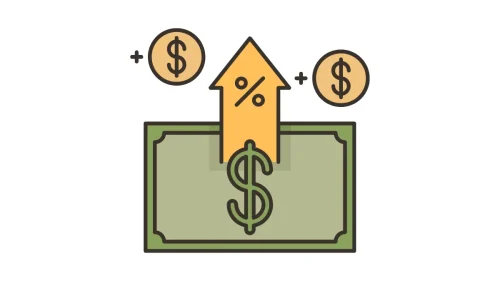How the Bond Yield Spread Between Two Countries Affects Exchange Rates
In the foreign exchange market, the bond yield spread (Bond Yield Spread) between two countries is an important factor influencing exchange rate fluctuations. This yield spread can reflect the market's expectations regarding the economic outlook and interest rate policies of the two countries, thus providing significant guidance on exchange rate trends. This article will delve into how the bond yield spread between two countries affects exchange rates and the underlying principles.What is the Bond Yield Spread?
The bond yield spread refers to the difference in yields between similar types of bonds (usually 10-year government bonds) from two countries. This difference can reflect the market's differing views on the economies and interest rate policies of these two countries. When one country's yield is higher than another's, it usually indicates that the market has a more optimistic outlook for that country's economy or expects its interest rates to be higher.For example, if the yield on a 10-year U.S. Treasury bond is 3%, while the yield on a 10-year German government bond is 1%, then the yield spread between the U.S. and Germany is 2%. This indicates that investors will receive a higher return on bonds invested in the U.S. compared to those in Germany.

The Mechanism of Bond Yield Spread's Impact on Exchange Rates
The bond yield spread affects exchange rates by influencing capital flows and investor expectations. Specifically:- Capital Flows: When one country's bond yield is higher than another's, investors tend to move funds from the low-yielding country to the high-yielding country in pursuit of higher returns. This increases demand for the currency of the high-yielding country, driving that currency to appreciate.
For example, if the U.S. yield is higher than that of the Eurozone, investors may shift from euros to dollars, leading to an increase in the USD/EUR exchange rate, meaning the dollar appreciates while the euro depreciates.
- Interest Rate Expectations: The yield spread also reflects the market's expectations regarding future interest rate policies of the two countries. If the market expects a country to raise interest rates, its bond yield may rise, attracting capital inflows, thereby pushing that country's currency to appreciate. Conversely, if the market expects a country to lower interest rates, capital may flow out, leading to depreciation of that country's currency.
For example, if the market expects the Federal Reserve (Fed) to raise interest rates while the European Central Bank (ECB) maintains current rates, U.S. bond yields may rise, widening the yield spread, which would strengthen the dollar.
The Bond Yield Spread and Carry Trade
The yield spread is also one of the foundations of carry trade in the foreign exchange market. Carry trade is a common forex strategy where investors borrow in low-interest-rate currencies and then invest in high-interest-rate currencies to earn the interest differential. When the yield spread between two countries widens, carry traders may increase demand for high-yield currencies, further pushing that currency to appreciate.
For example, suppose Japan has very low interest rates while Australia has higher rates; investors can borrow in yen and then convert the funds into Australian dollars for investment to earn the interest differential. If Australia's yields continue to rise while Japan maintains low rates, the Australian dollar may continue to strengthen.
The Impact of Bond Yield Spread on Major Currency Pairs
The yield spread has a particularly significant impact on some major currency pairs. For example:- EUR/USD: The yield spread between the U.S. and the Eurozone is an important indicator affecting EUR/USD. If U.S. bond yields are higher than those in the Eurozone and the gap widens, it typically strengthens the dollar, leading to a decline in the EUR/USD exchange rate. Conversely, if Eurozone yields rise, narrowing the gap with the U.S., it may support a stronger euro.
- USD/JPY: The yield spread between the U.S. and Japan is also a key factor determining the USD/JPY trend. Due to Japan's long-standing low interest rate policy, when U.S. yields rise, the yield spread widens, which may push the USD/JPY higher.
- GBP/USD: The yield spread between the U.K. and the U.S. also affects the pound's trend. If U.K. yields rise, narrowing the gap with the U.S., it may lead to an increase in GBP/USD, and vice versa.
How to Interpret Changes in the Yield Spread
Changes in the yield spread reflect the market's adjustments to economic outlook and interest rate policies, so it is important to carefully observe the following points:- Widening Yield Spread: When the yield spread between two countries widens, it usually indicates that investors prefer the higher-yielding country, and capital may flow into that country, pushing its currency to appreciate. For example, if U.S. yields rise faster than those in the Eurozone, the dollar may strengthen.
- Narrowing Yield Spread: When the yield spread narrows, it may indicate that the market's confidence in high-yielding countries is weakening or that confidence in low-yielding countries is strengthening. This may lead to capital withdrawal from high-yielding countries, thereby weakening their currencies.
- Reversal of Yield Spread: When the yield spread between two countries reverses, meaning the previously lower-yielding country now has a yield exceeding that of the other country, this may have a significant impact on exchange rates. For example, if Eurozone yields exceed those in the U.S., the market may shift from dollars to euros, pushing the euro to appreciate.
Conclusion: Understanding the Value of the Yield Spread
The yield spread is one of the important indicators affecting the foreign exchange market, reflecting the market's relative views on the economic conditions and interest rate policies of the two countries. By observing changes in the yield spread, investors can better predict exchange rate trends and formulate effective trading strategies. This analytical approach is crucial for those looking to seize trends and interest differential opportunities in the foreign exchange market.Hi, We are the Mr.Forex Research Team
Trading requires not just the right mindset, but also useful tools and insights.Here, we focus on Global Broker Reviews, Trading System Setup (MT4 / MT5, EA, VPS), and Forex Trading Basics.
We personally teach you to master the "Operating Manual" of financial markets, building a professional trading environment from scratch.
If you want to move from theory to practice:
- Help share this article to let more traders see the truth.
- Read more articles on Broker Tests and Forex Education.





